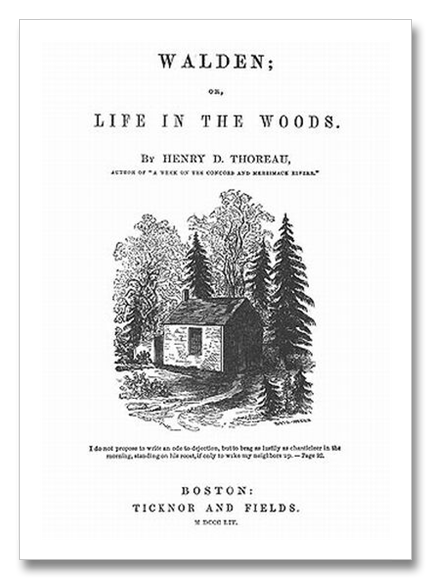March 21, 2012: — Henry David Thoreau, Concord Massechusetts, Walden Pond. Among temperature and non temperature dependent flowering species, climate change has affected and will likely continue to shape the pattern of species loss in Thoreau’s woods. Species that have decreased greatly in abundance include anemones, buttercups, asters, campanulas, bluets, bladderworts, dogwoods, lilies, mints, orchids, roses, saxifrages, and violets. (1)
All total, Thoreau documented 473 species between 1852–1858. reliable temperature records did not exists in the mid 19th century at Walden pond, but over the past 100 years the temperature there has risen by 4.3 degrees. Flowering plants are blooming on average 7 days later than in Thoreau’s time. (2)
Twenty seven percent of the plants studied by Thoreau have become extinct and 36 percent are now so rare that they may soon become extinct. More northerly species have decreased in abundance in relation to southerly species. (3)
The work by Willis et al., from Harvard, Boston University and Yale, is the first to report that extinction risk due to climate change is directly influenced by climate change. Plants whose flowering times are not based on temperature (i.e. daylight length flowering species) are also decreasing in abundance.
The authors go on to relate their findings to global patterns of species extinction due to climate change. “These results represent a link between the impacts of climate change on local community composition and broader patterns of taxonomic selectivity observed in the fossil record during past mass extinction events.” (4, 5)
1. Willis et al., Phylogenetic patterns of species loss in Thoreau’s woods are driven by climate change, PNAS, July 2008.
2. Miller-Rushing and Primack, Global warming and flowering times in Thoreau’s concord: A community perspective, Ecology, 2008.
3. Willis et al., Phylogenetic patterns of species loss in Thoreau’s woods are driven by climate change. Proceedings of the National Academy of Sciences U.S.A., 2008. http://www.pnas.org/content/early/2008/10/24/0806446105.abstract?sid=d1511438-5704-4d47-9188-bae1000a8d80
4. McElwain and Punyasena, Mass extinction events and the plant fossil record, Trends in Ecology and Evolution, 2007.
5. Tannner et al., Assessing the record and causes of LateTriassic extinctions, Earth Science Reviews, 2004.

